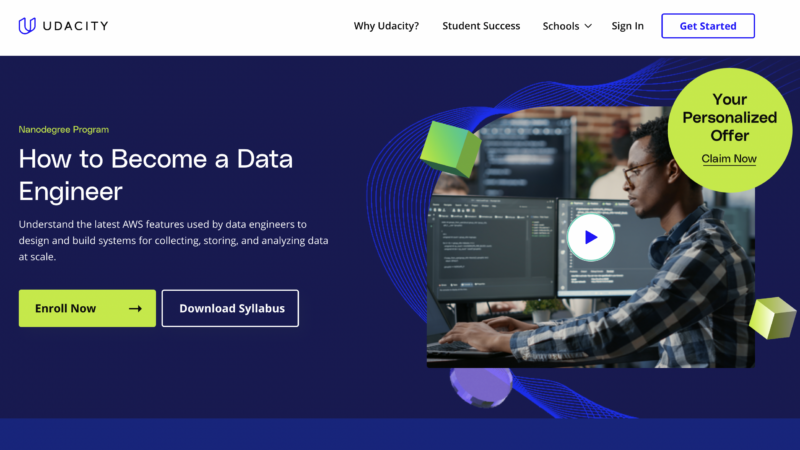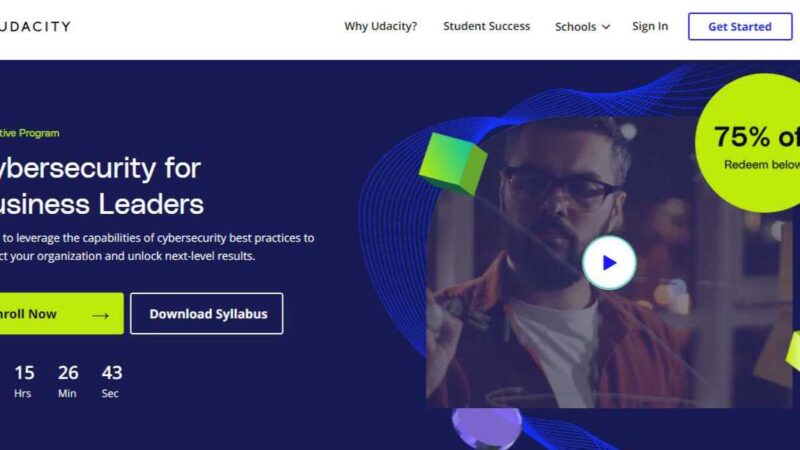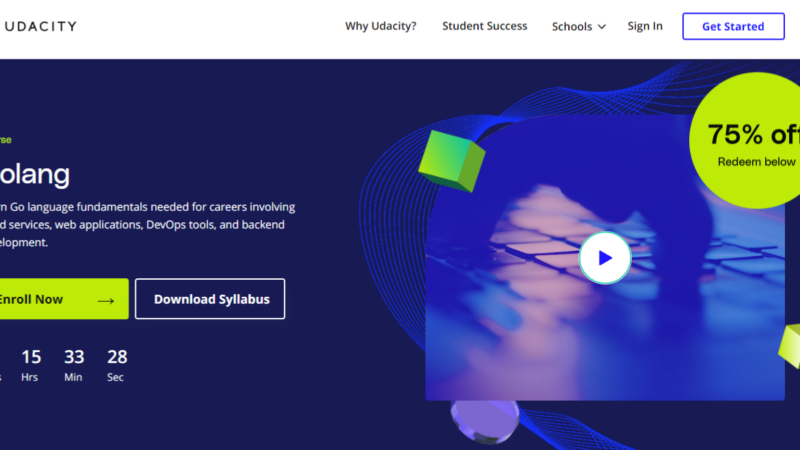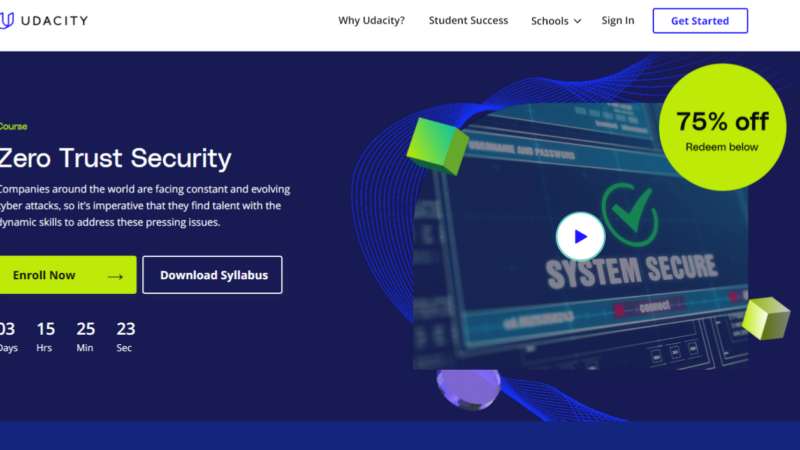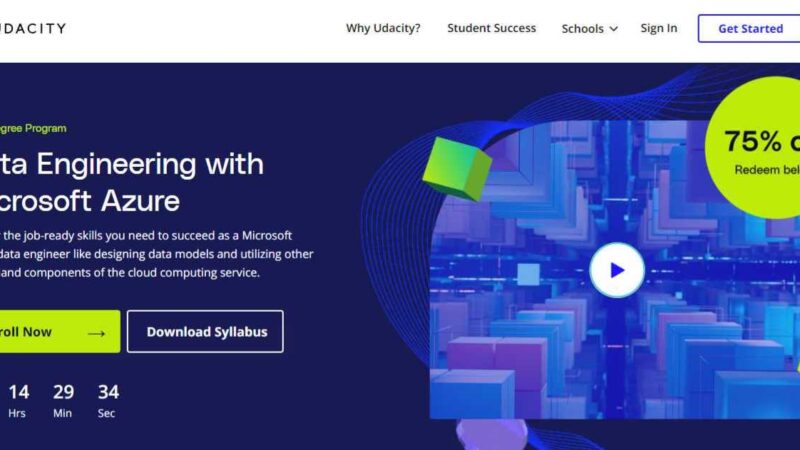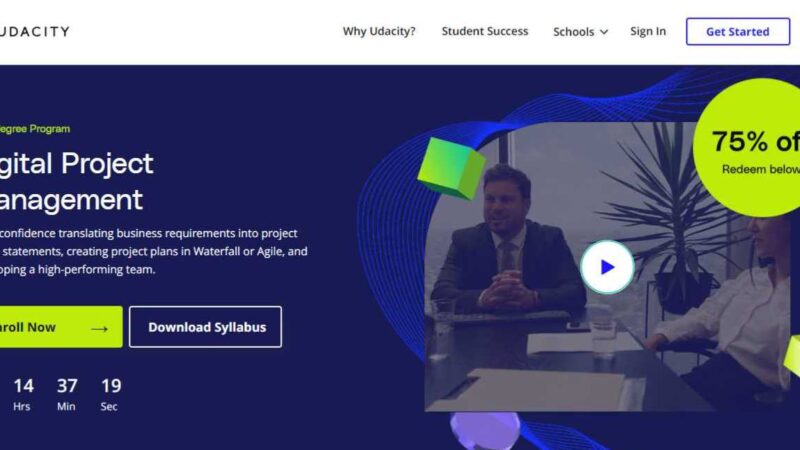Udacity Intel Edge AI for IoT Developers Nanodegree Review

Edge AI applications are said to be the future of the world wide web. With a background in AI, Edge technologies are giving developers the opportunities to use hardware combined with data, deep learning and algorithms to give gadgets power to make systematic decisions. These decisions allow gadgets to do some pretty amazing things, some of them learning based off of previous responses and stimuli.
Diving into the depths of deep learning comes with challenges, as the algorithms and techniques get more and more advanced with time. With the demand for those with AI skills on the rise, now is a great time to jump in, creating a foundation of complex concepts that will power technologies of the future. You can find these skills is Udacity’s Intel Edge AI for IoT Developers Nanodegree. Below, we’ve taken a deeper look into the course, in an attempt to help you decide if the academy and the course are right for you. We also included a look at the job forecast, where you can see just how beneficial a career in AI can be. If you’ve been on the hunt for a course that will brighten your future, this could be just the thing.
Who is Udacity and What is a Nanodegree?
Udacity came to life back in 2012. They were originally created with the idea of bringing the ability to learn complex technological concepts to all kinds of learners. In the beginning, there were a few concepts taught by two Stanford professors who also happen to be the founders. As time would go on, they would partner with top tier companies in the industry, working to put together in-depth courses that include hands-on practice to launch graduates into the field more confidently. Today, you will find both introductory courses and certification programs known as nanodegrees. These are degrees that focus on only one area, generally taking only a few months to complete.
Nanodegree Perks
In an attempt to stand out among the competition, Udacity nanodegrees come with a few extras. These are each created with the idea of helping learners succeed and making the course run as smooth as possible. When you sign up for a nanodegree with Udacity, you’ll score:
A mentor
They will be there whenever you need them. In the case of technological problems or, just to keep you afloat. You can reach out to them day or night, normally getting your problem solved in no time.
Freedom
The only schedule you’ll have to follow is the one you make for yourself. You have the freedom to learn when you want only needing to keep up with a few deadlines.
Lasting Connections
Connect with other learners just like you in the student’s forum. You can chat about topics, create new ideas together or, just get support when the going gets tough.
Real-Industry Projects
Included in every nanodegree are projects that attempt to mimic those professionals are working with daily. This will have you completing your certification with a certain level of confidence right after certification.
Career Prep
This includes clean up of your resume and LinkedIn along with potential GitHub setup. You’ll have a chance to have a mock interview with a professional plus, have your resume added to the Udacity database where recruiters are constantly on the hunt.
Meet the Instructors
If the extras don’t catch your attention, the team of instructors will. They include current employees of Intel, each one with spectacular educational backgrounds. Apart from their studies, a few have other industry experience in the world of Deep Learning, putting their personal spin and perspective into the course for you. Your instructors for this course include:
Stewart Christie
Stewart is in charge of the IoT developer program at Intel. Apart from creating content, he also puts workshops together in an attempt to bring the developer community together. Some of his expertise includes computer vision software and robotics.
Michael Virgo
Michael’s beginning was in business, where he continued his learning by taking up technical courses. That would later lead him to a career as a Self-Driving Car Engineer. You will now find him creating content where he can pass on his immense amount of industry knowledge.
Soham Chatterjee
Before starting to work on his masters in research, he was a Deep Learning Researcher for Saama Technologies. Apart from his studies, he is a Software Innovator for Intel.
Vaidheeswaran Archana
As a graduate student, Vaidheeswaran is focusing on research in Deep Learning and Smart Grids. Along with her studies, she works as a Software Innovator for Intel and used to hold the title of Deep Learning Engineer at Saama Technologies.
What are the Prerequisites?
This course is not meant for beginners. It starts off with in-depth knowledge, where you will need a good grasp on a few things in order to understand. You will need to come with:
- Intermediate Python programming skills
- The ability to both train and deploy deep learning models
- Knowledge of DL layers and architectures (CNN based)
- Know a bit about command lines
- Work with OpenCV
If any of these sound a little out of your league or maybe you’d like to brush up, you can find a list of free courses offered by the academy or, check out their full course catalog to build a more solid basis in any or all of the requirements above.
A Breakdown of the Course
This course is broken into three sections. In each one, you’re introduced to software that is generally used in the field, plus, some of Intel’s very own creations. You’ll be developing Edge AI applications, which are considered to be the next big thing to hit AI. You’ll use the same techniques as the pros plus, finish off the course with plenty of hands on experience.
Edge AI Fundamentals using OpenVINO
You will first work with a pre-trained model to start computer vision inferencing. You’ll then use the help of the Model Optimizer, creating an agnostic intermediate representation on deep learning models. You’ll also work with creating and deploying an app on the edge, pushing the information through MQTT. To apply this knowledge, you’ll be asked to sift through different models to choose the best for detecting the number of people in a given frame.
Hardware for Computer Vision & Deep Learning Application Deployment
This section is all about the hardware you’ll be working with. You will be taught how to tell the difference between different types of software plus, how to choose the right one. You’ll work with Intel’s DevCloud, testing and deploying neural network interference on all the different hardware types, adding your creation to devices to improve performance. The last thing you’ll work with is building a custom queuing system, one like retail and transportation services use.
Optimization Techniques and Tools for Computer Vision & Deep Learning Applications
Learn how to optimize your newly created code. You can do things like reduce interference time and to check how expensive your model is. You’ll use a VTune amplifier, seeing which parts of your code you may need to jump in and fix for optimization. Lastly, you’ll see how to package your data and application code, allowing it to be easily deployed to a wide range of devices. At the end, you’ll use models in OpenVINO toolkit to create a computer pointer using your eyes as the control.
How Long Will It Take?
Udacity’s estimate is, at 10 hours per week, it will take three months to complete the course. This does depend on each learner, as everyone’s learning pace is different and therefore, the time they will take. You will be able to take as long as you like, only keeping up with the deadlines that are placed on a few of the projects.
Thoughthis may sound like a sweet deal, make sure that you think about how long it will take you to complete the course, setting a schedule that you can follow. You’re going to want to finish as fast as you can, especially since the cost is equally correlated to the time it takes.
What’s the Cost?
The cost is determined by the number of months that you have access to the course. This is why it goes up the longer that you take. In an attempt to make the course affordable for all, Udacity offers a few ways to pay. The best option for you will depend on a few things, choosing the one that suits both your schedule and your budget best. We would like to mention that, currently, either way you pay comes with a free month, as part of a promotional deal.
Pay as you go
You have the option to pay per month, where it is $359 for each month that you have access. This, along with the promo, starts after your first free month, and you will be billed each month after that for the entire duration of the course.
One lump sum
You can go with Udacity’s recommended time of completion of three months and enjoy a 15% discount while you’re at it. Because of the promo you’ll be paying for two months of access but receiving three, which brings the cost to only $206 per month. This does need to be paid up front but, could be a good deal if you’re confident you can finish in the estimated three months.
What’s the Rating?
Udacity has a strong reputation, one that has helped them climb the ladder to the top. Though as an academy they are highly recognized, how does this course play out in the world wide web? Here is what a few learners and graduates had to say:
“You see these in real-world situations like worker safety–making sure that workers are wearing the right protective gear.You can have a camera pointing at them. ‘Yes, they have their helmet on. OK, we’ll unlock the gate and let them go into the potentially dangerous manufacturing environment.”- Formica A.
“”One recent medical example I found interesting was how a company used our OpenVINO technology to build surgical hospital logistics robots that can carry medicine and supplies around the hospital without humans having to touch as many things,” Robert T.
“Optimizing direct deployment of models on edge devices requires knowledge of unique constraints like power, network bandwidth and latency, varying compute architectures and more. The skills this course delivers will allow developers — and companies that hire them — to implement learnings on real-world applications across a variety of fields.” Johnathan B.
A Look at the Job Market
In a report done by Towards Data Science, the forecast is promising. They report there to be 1 million spots opening, as the marketing with AI Edge hits an all time high of 1.12 trillion by 2023. Because of the amazing abilities that come along with complex AI concepts, The New York Times has recently pointed out that companies are offering huge salaries to those with skills, especially since there is a shortage that just can’t keep up with rising demand. Salaries are going well over $100,000, with higher paying opportunities the higher the skillset becomes.
That being said, you will be entering the market at a time when job creation is at its peak, with a lot of seats left to be filled. This could be an opportunity to land a job that will allow you to evolve your abilities, growing and learning as you go.
A Few Last Things to Consider
AI is taking the world by storm. Soon, there will not be a single market that isn’t affected by it, as it expands into all the smallest corners. This could be a perfect time to start to develop advanced skills, especially with a course that is developed in collaboration with Intel.
Taking this course, you’ll have a killer curriculum along with amazing instructors and other extras that come along with every nanodegree. If you’ve got the skills needed to start the course, this could be a great option, especially now that Udacity has added the promotional deal.
